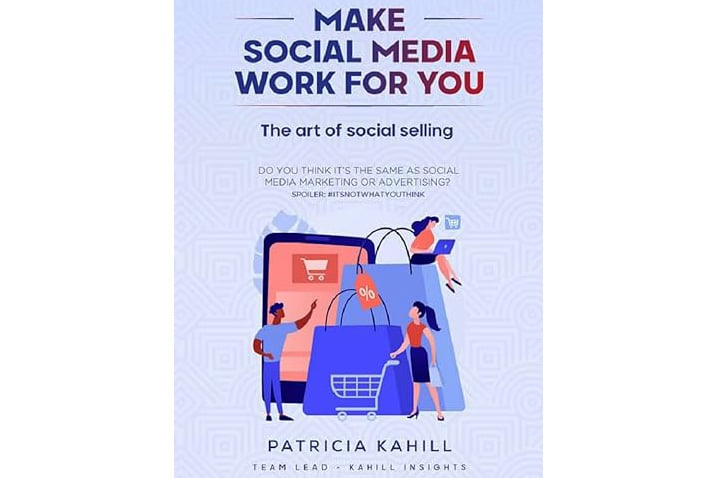Prime
Kahill tells all on her love with the internet of things

What you need to know:
- Book Title: Make Social Media Work For You: The art of social selling
- Author: Patricia Kahill
- Year of Publication: 2022
- Pages: 102
- Price: Shs30,000
- Where: Uganda Museum bookshop
When Patricia met Phoebe at Kampala Pentecostal Church, later known as Watoto Church Downtown, she was just a kid.
“The year was 1998. I had just finished my Primary Seven. My granduncle owned a computer and a landline phone at home. I would connect to the internet through the dial up connection,” writes Patricia Kahill.
This humble beginning fired her fascination with and fixation on the internet. Thereupon, a journey of a thousand leagues was embarked upon.
However not by a single step but a single finger as she learnt to type on blank Ms Word pads “trying to create sentences and managing my speed.”
Today Kahill, there are close to 600,000 responses when you Google her name, is a founder of Kahill Insights, a digital company specialising in content creation, curation and marketing.
Her story is told in her book “Make Social Media Work For You: The art of social selling”, which reads like a testimony cum creative call to arms.
With baby steps and giant leaps, she initially opened up an email address and a whole new world of possibility. When people saw the end of the world looming by technology overtaking society, Kahill was unafraid of Arnold Schwarzenegger-esque Terminators or bulletproof robots reaching out from her computer to put an end to her life.
Instead of such a dystopian technological virtuality, Kahill used Yahoo, Google, Twitter, Facebook, Instagram and other social media platforms to make her mark. Her world then became like The Terminator sequels, with Schwarzenegger’s robot returning not to do her in but as a good guy holding her hand towards new horizons.
So, between 2002 and 2004, she joined platforms such as Friendster, Hi5, Myspace, Tagged, Orkut and never looked back as she also joined Face Mash, now Facebook, and this is how she really began spreading her social media wings.
Later, as Face Mash descended into oblivion, she joined Facebook in 2005 when it no longer catered to Harvard University students alone, where her friend Phoebe was a student, and thereby spread to Yale, Stanford and other Ivy League institutions.
Kahill joined as a foreign student after enrolling at Mbarara University of Science and Technology.
She and her friend Phoebe started doing business online selling African items as Uganda Telecom supplied a favourable bandwidth conduced to her nascent business dealings.
When her company soon went belly-up, she never quit. In 2010, she joined WordPress and she became a blogger of some standing and delved further into business. One gateway to effect online business is Social Media Influencing and Kahill takes us through what it takes to become an effective social media influencer.
As her confidence and knowledge grew, so did her established credibility in this industry. Her niche-based content was leveraged and tailored to boost brands across specialised areas. We learn from her about how one’s content must be aligned with one’s messaging and how engagement, an umbrella term for how social media actions reflect and measure how much a given audience interacts with given content, is an indicator of the reach of one’s content.
Social media reach is a media analytics metric that refers to the number of users who have come across a particular content on a social platform such as Facebook, LinkedIn, WhatsApp, Pinterest, SnapChat, Instagram or Twitter, among others.
In chapter 3, Social Selling, Kahill informs us how “social selling is about using your social network to find the right prospects, build trusted associations, and achieve your sales goals.
This sales technique enables you to make sales lead generation and sales prospecting processes while dropping the need for cold calling. Building and keeping relationships is easier within these platforms as you and your customers build trust.”
Kahill, the book reveals, is all about trust and building relationships as means of building one’s business online. Her philosophy is in line with best practice.
Indeed, it was JP Morgan, the magnate who created the world’s first billion-dollar corporation, who said: Money equals business which equals power, all of which come from character and trust.
Much of Kahill’s arguments for a winning business formula carry the subtext of trust and character. To underline these arguments, she begins each chapter with a Bible quote.
In glove with social selling is social listening.
“You cannot do social selling without listening to what people are saying about your brand. As with every communication there must be a listener and a speaker,” she writes.
She adds, “Social media is a critical part of a larger, more complete sales service, communications and marketing strategy that reflects and adapts to markets and the people who define them.”
There are about 4.9 billion social media users globally, meaning 60.49 percent of the global population use Social media.
These users spend an average of two hours every day sharing, liking, tweeting and updating on social media platforms. The global social media users are forecasted to reach 5.85 billion by 2027.
So Kahill’s insights are very important today and will be even more important in the days to come.




